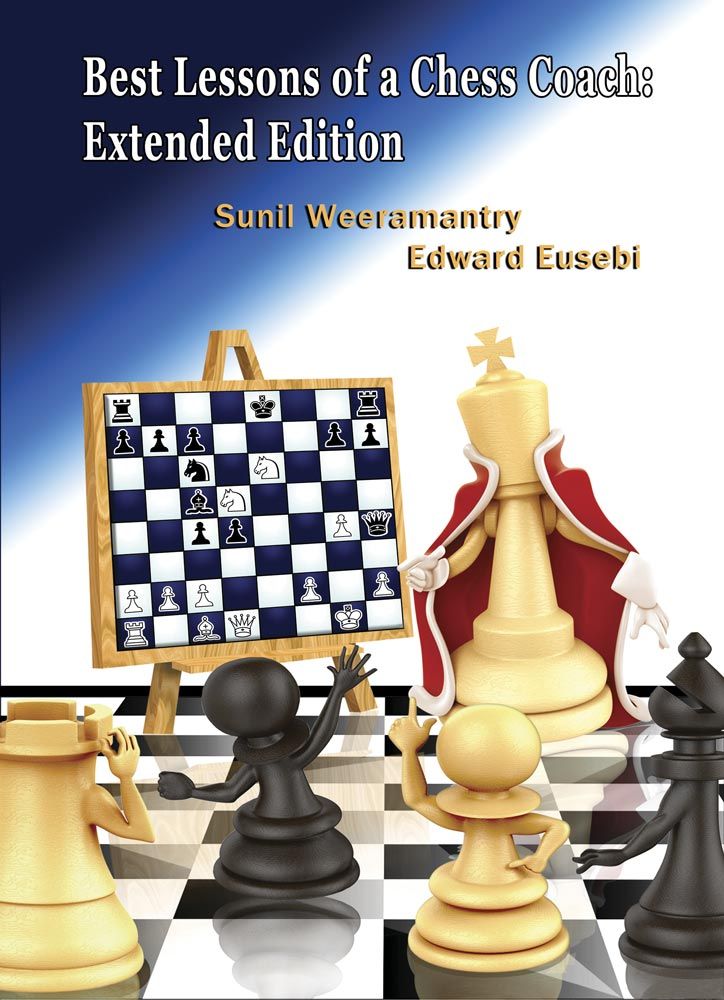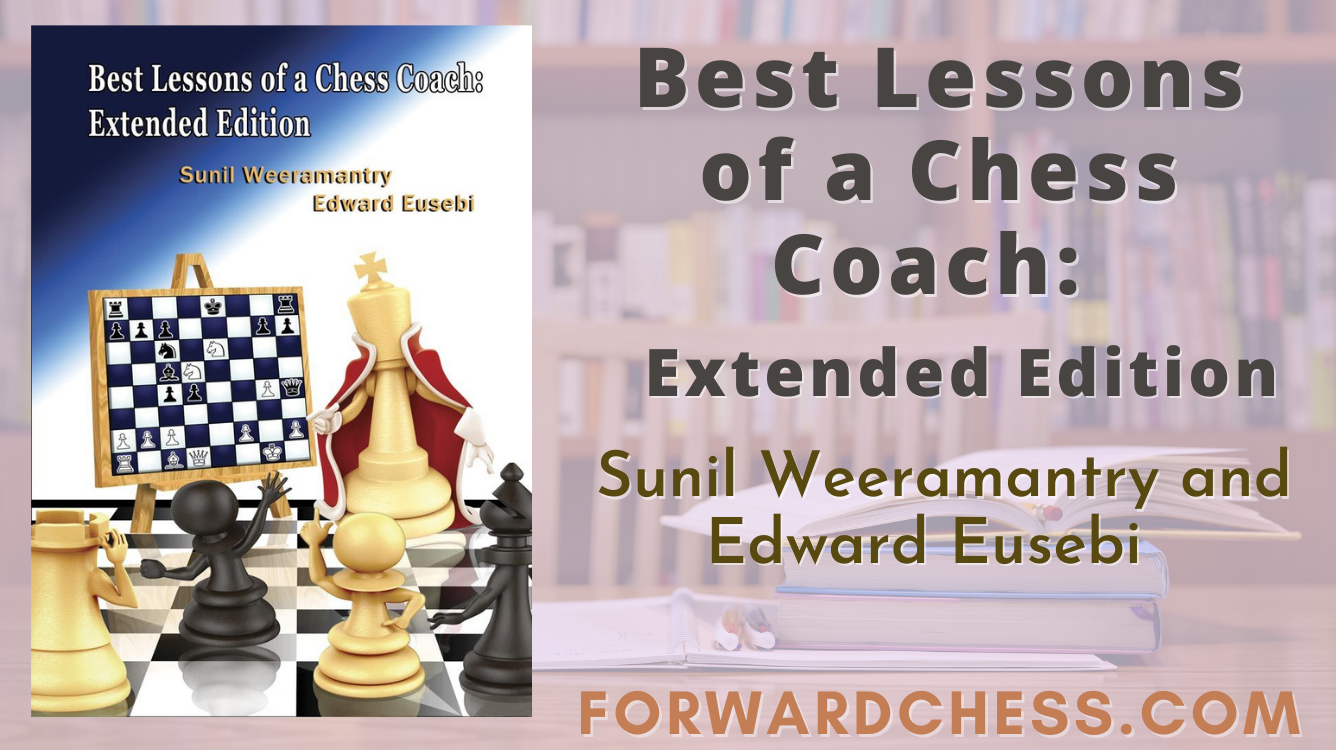
Best Lessons of a Chess Coach: Extended Edition
Publisher: Mongoose Press
Author: Sunil Weeramantry and Edward Eusebi
FC Release date: Jun 23, 2020






“Winning a game of chess is a matter of accumulating advantages’” The authors.
This book is a new edition of a book that was originally published in 1993. There have been extensive revisions and additions for this new edition. The number of main games has increased from 10 to 12, and 48 new illustrative games have also been added, including recent games by the current world elite. The main games are extensively annotated as in the original book, while the new illustrative games are more lightly annotated.
The book is structured around four main themes:
The authors, FM Sunil Weeramantry and CM Ed Eusebi, both have many years of coaching experience and have pitched the material at club players. As an aside, Weeramantry is also GM Hikaru Nakamura’s stepfather, so there is a strong connection to an elite player as well. Most of the main games were played by Weeramantry, and hence the authors can clearly share the thoughts he had during the games.
The main games all follow the same structure, with annotations, guidelines, questions for the reader to solve, and a review at the end.
The annotations are very clear and include a lot of verbal commentaries. The authors don’t go overboard with extensive analytical variations, as this could have easily overwhelmed the intended readers and diluted their essential discussions. The review provides a summary of the main themes discussed in the game and the advice and guidelines given in the game.
The questions usually either ask readers to find the best move or for a plan to continue the game. The authors often sensibly include a discussion of several possible answers to the questions, and not just the correct one. In this way, readers can understand why a tempting answer is wrong. This is sound pedagogy and will aid the learning experience.
Many guidelines are also included throughout. Some examples include:
Two examples from the book are given below, with annotations from the book. The first game is one of the main games, while the second is one of the supplementary games.
In summary, this is an excellent teaching book on some strategic aspects of the middlegame. The author’s coaching experience shines throughout the book and makes the material very accessible to club players. The result is an instructive and entertaining book on an essential subject.


Book Review: Best Lessons of a Chess Coach: Extended Edition by Sunil Weeramantry and Edward Eusebi (Mongoose Press)


“Winning a game of chess is a matter of accumulating advantages’” The authors.
This book is a new edition of a book that was originally published in 1993. There have been extensive revisions and additions for this new edition. The number of main games has increased from 10 to 12, and 48 new illustrative games have also been added, including recent games by the current world elite. The main games are extensively annotated as in the original book, while the new illustrative games are more lightly annotated.
The book is structured around four main themes:
The authors, FM Sunil Weeramantry and CM Ed Eusebi, both have many years of coaching experience and have pitched the material at club players. As an aside, Weeramantry is also GM Hikaru Nakamura’s stepfather, so there is a strong connection to an elite player as well. Most of the main games were played by Weeramantry, and hence the authors can clearly share the thoughts he had during the games.
The main games all follow the same structure, with annotations, guidelines, questions for the reader to solve, and a review at the end.
The annotations are very clear and include a lot of verbal commentaries. The authors don’t go overboard with extensive analytical variations, as this could have easily overwhelmed the intended readers and diluted their essential discussions. The review provides a summary of the main themes discussed in the game and the advice and guidelines given in the game.
The questions usually either ask readers to find the best move or for a plan to continue the game. The authors often sensibly include a discussion of several possible answers to the questions, and not just the correct one. In this way, readers can understand why a tempting answer is wrong. This is sound pedagogy and will aid the learning experience.
Many guidelines are also included throughout. Some examples include:
Two examples from the book are given below, with annotations from the book. The first game is one of the main games, while the second is one of the supplementary games.
In summary, this is an excellent teaching book on some strategic aspects of the middlegame. The author’s coaching experience shines throughout the book and makes the material very accessible to club players. The result is an instructive and entertaining book on an essential subject.

